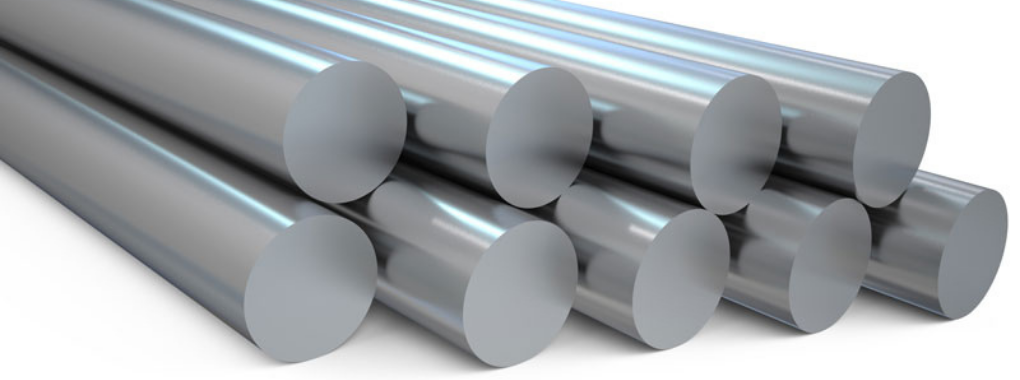Mô tả
1. OVERVIEW OF LOW-ALLOY STRUCTURAL STEEL
Low-alloy structural steel is a type of alloy steel with a low content of alloying elements, typically under 3%. This steel comes in various grades and standards, designed to meet specific combinations of properties such as toughness, formability, weldability, and atmospheric corrosion resistance.
2. SPECIFICATIONS OF LOW-ALLOY STRUCTURAL STEEL
Standards: JIS / ASTM / AISI / SAE / EN / DIN / BS / GB / API
Steel grades: SS400, S355JR, S355J0, S355J2, Q345A–Q345E, Q460C, etc.
Delivery conditions: U / N / A / S / FP / AC / QT / EFS
Shapes: Round / Square / Flat / Hexagon
3. MANUFACTURING PROCESS
Step 1: Material Preparation
The main raw materials for steel production are iron ore, scrap steel, coke, and limestone. Depending on the steel grade, additional alloying elements such as Mn, Cr, Ni, Mo, V, Nb may be added, with a total content usually below 5%. The selection and blending of raw materials determine the quality and mechanical properties of the final steel.
Step 2: Pig Iron and Steelmaking
Iron ore is reduced in a blast furnace to produce molten pig iron containing impurities. The pig iron is then refined into steel in an oxygen converter or electric arc furnace. Oxygen is blown in to remove carbon and other impurities, while alloying elements are added to achieve the desired chemical composition.
Step 3: Steel Casting
Molten steel is continuously cast into billets, slabs, or blooms. This step ensures uniformity in the microstructure and minimizes internal defects.
Step 4: Hot Rolling and Pressure Processing
The cast billets are hot-rolled into semi-finished and finished products such as plates, H/I/U/L sections, or solid round bars. Hot rolling shapes the products and refines the grain structure, improving mechanical properties.
Step 5: Heat Treatment and Mechanical Property Control
Depending on usage requirements, low-alloy structural steel may be normalized to even out the microstructure or quenched and tempered to optimize strength and ductility. Some modern mills use controlled rolling and cooling to enhance mechanical properties without extensive heat treatment.
Step 6: Quality Inspection and Final Products
Before shipment, steel undergoes strict quality control: chemical composition analysis, tensile, bending, and impact tests, hardness measurement, as well as ultrasonic and X-ray inspections for defects. Products are then packaged and classified according to standards, ready for use in construction, bridges, factories, and critical infrastructure.
4. KEY PROPERTIES
Strength
Low-alloy steel has superior strength compared to ordinary carbon steel. While carbon steel has a yield strength of around 235 MPa, low-alloy steel can reach 345 MPa. This allows thinner steel sections while maintaining the same strength, enabling lighter and more efficient designs. Modern processes like critical annealing and rapid cooling can further improve deformation capacity, with yield strengths in the range of 310–345 MPa.
Weldability
Welding low-alloy steel is generally straightforward, but weldability depends on steel composition. Most low-alloy steels are easily welded, though higher carbon or manganese grades may require special techniques such as pre-heating or low-hydrogen electrodes to prevent cracking. In some cases, fully hydrogen-free electrodes may be needed regardless of steel thickness.
Corrosion Resistance
High-strength low-alloy steel is designed to maintain strength while reducing cross-section, making it lighter and cost-effective. With thinner sections, corrosion resistance becomes critical. Protective coatings, as well as alloying elements such as copper, phosphorus, silicon, chromium, nickel, and molybdenum, improve corrosion resistance, ensuring durability and reliability.
5. APPLICATIONS
Low-alloy steel is widely used across industries due to its superior properties. Common applications include:
-
Steel pipes: for oil and gas pipeline systems.
-
Automotive and jet engine components: for high strength and load-bearing capacity.
-
Rail tracks: providing the toughness required for heavy loads.
-
Structural engineering: for onshore and offshore constructions, enhancing strength and load-bearing capacity.
.png)







